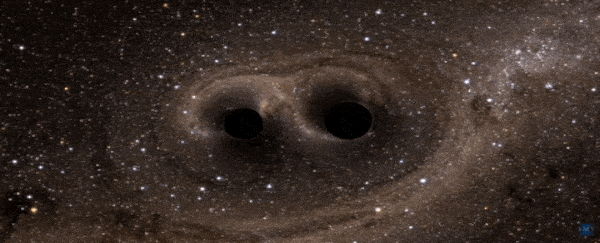Back in February this year, the world celebrated when physicists finally detected gravitational waves - the tiny ripples in spacetime first predicted by Albert Einstein a century ago.
We've since gone on to spot a second gravitational wave event - and now a team of physicists has suggested that these ripples might not just be short-lived occurrences. They think they might permanently alter the fabric of space.
Even more impressive - the researchers think they might have actually found a way to detect these permanent shifts in spacetime, also known as gravitational-wave memory.
"For so many years, people were simply concentrating on making that first detection of gravitational waves," lead researcher on the new project Paul Lasky, from Monash University in Australia, told Charles Q. Choi from PBS.
"Once that first detection happened, our minds have become focused on the vast potential of this new field."
Let's step back for a second though, and have a quick refresher. Gravitational waves are tiny fluctuations in spacetime that occur whenever an object with mass moves, just like ripples moving out after a pebble's been dropped in a lake.
They were first predicted by Einstein's theory of general relativity, but they're so minuscule that we'd never been able to detect them.
Until this year, when we were able to measure gravitational waves that had originated from one of the most violent events in the Universe: two black holes merging (you can see them orbiting each other before merging in the gif above).
And when we say minuscule, we mean ridiculously tiny. The ripples that the Laser Interferometer Gravitational-Wave Observatory (LIGO) picked up in February this year were about a billionth of the diameter of an atom.
So how could these tiny shifts make permanent changes in spacetime? And what would that mean for the Universe?
The idea of gravitational-wave memory was first predicted by Russian scientists back in 1974, but seeing as no one had even confirmed the existence of gravitational waves back then, it went largely unnoticed.
But after the LIGO detection in February and again in June, Lasky and his team revisited the idea.
To explain gravitational-wave memory, Lasky uses the example of two black holes orbiting each other before they eventually merge, and two astronauts drifting side by side in orbit around this black hole binary system.
The astronauts are initially separated from one another by say, 10 metres. And as the black holes spiral towards each other, they'll release gravitational waves that ripple spacetime and cause the distance between the two astronauts to fluctuate ever so slightly.
After the black holes collide and merge, the gravitational waves will stop, and the astronauts' distance will once again be constant - but not the same as the original distance.
And that's what gravitational-wave memory is - a permanent stretching or shrinking of spacetime as a result of gravitational waves.
This effect would hypothetically be detected as an additional flare of gravitational waves near the end of the initial event. Which sounds straightforward enough, but as with most theoretical physics, there's a problem. If gravitational waves were hard to detect, gravitational-wave memory will be even harder, because its ripple in spacetime will be even smaller.
"In general, we expect the size of the memory effect to be between about one-tenth and one-hundredth of that of the gravitational waves," Lasky told PBS. "For almost all events other than the most catastrophic collisions in spacetime, the effect cannot be measured."
In fact, in general it's been assumed that LIGO would never be able to detect these memory flashes, no matter how catastrophic the event they originated from.
But Lasky and his team have now come up with a way that it could work - and it all comes down to volume.
Basically, with LIGO now expected to detect an increasing amount of gravitational waves, the researchers suggest that, over time, they'd be able to see a pattern of these memory events emerge.
"Our work has shown that the combination of all these mergers will enable us to measure the memory effect over time," he explained. "The key is being able to stack the signals from all of the events in a clever way."
The researchers estimate that LIGO would be able to detect the memory effect after observing 35 to 90 mergers as dramatic as the one back in February, but if the observatory becomes more sensitive, it might happen even sooner.
No one can confirm that this technique will work until then, but the physics community is pretty impressed.
"This is a very clever way of measuring gravitational-wave memory and exploring it observationally," LIGO co-founder Kip Thorne from the California Institute of Technology, who wasn't involved in the study, told Choi. "I never thought it'd be possible with LIGO."
If we really can detect gravitational-wave memory, it won't just be a momentous day for our understanding of the Universe - it could also help solve a problem that physicist Stephen Hawking has been puzzling over for decades: the black hole information paradox.
Basically, the paradox stems from the fact that conventional physics states that nothing, not even light, can escape a black hole's event horizon. But quantum physics tells us that information can never be destroyed.
Stephen Hawking has recently tried to solve the paradox by suggesting that information can be carried out of a black hole by something known as 'soft hairs', which are essentially zero-energy forms of electromangetic and gravitational radiation that release information as black holes evaporate.
And gravitational-wave memory could actually measure those soft hairs and determine whether they exist once and for all.
We're a long way off doing that, but at least now, we have a plan. And with a new space-based gravitational wave observatory set to go online by 2029, we might not have to wait another 100 years for results.
The research has been published in Physical Review Letters.
